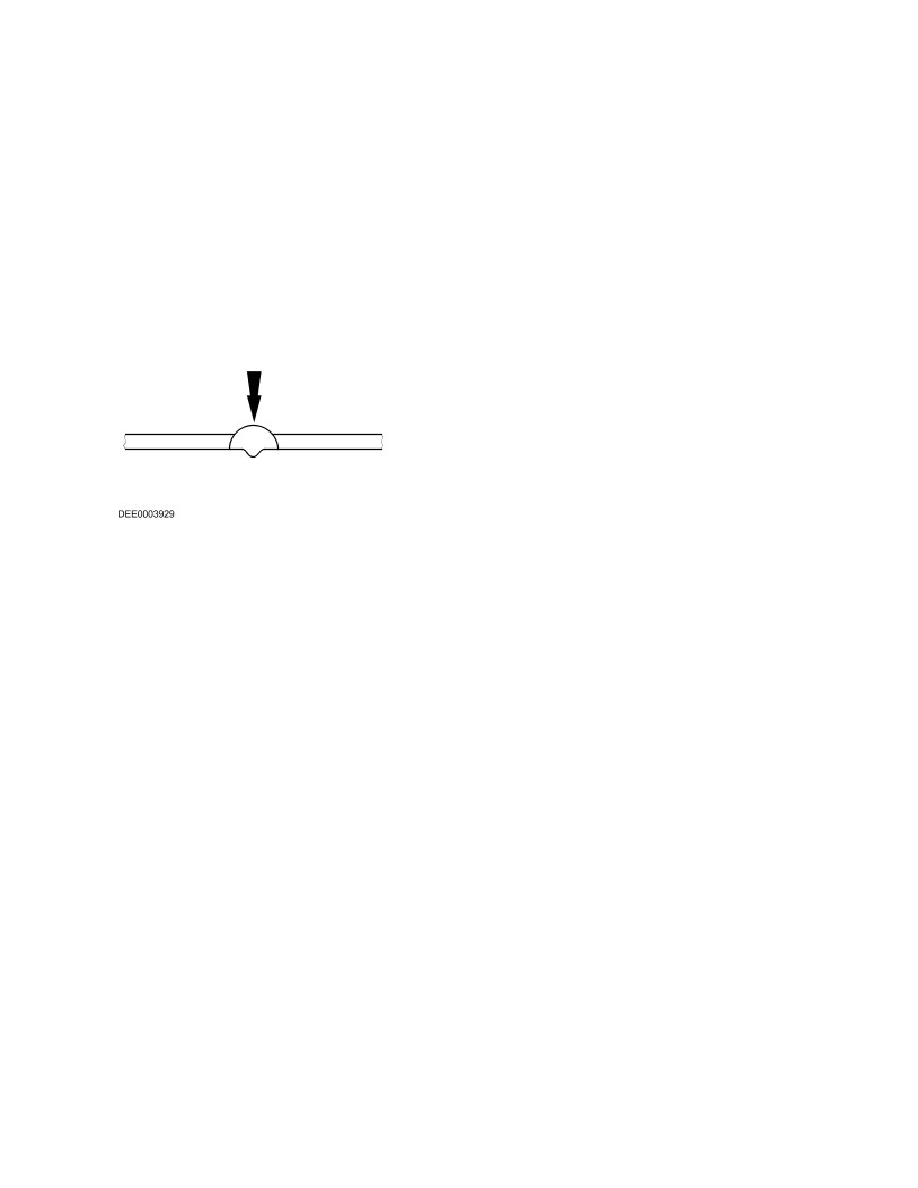LR3/Disco 3

Sectional replacement In many cases it makes technical and economical sense to carry out a sectional
replacement. The two main considerations are firstly, maintaining the original overall body shell structure and
secondly, keeping the repair costs to a minimum.
In many cases it makes technical and economical sense to carry out a sectional replacement. The two
main considerations are firstly, maintaining the original overall body shell structure and secondly, keeping
the repair costs to a minimum.
The main method for sectional replacement: Butt joints New part and old part are joined with a continuous MIG
weld seam. Butt joints are most commonly used for sectional replacements on members and pillars, or on short
severance cuts.
Butt joints
New part and old part are joined with a continuous MIG weld seam.
Butt joints are most commonly used for sectional replacements on members and pillars, or on short
severance cuts.
Butt joint
NOTE :
Prepare parts remaining on the vehicle / new parts. Reshape the adjoining surface of any dented body parts that
are to remain on the vehicle using a hammer and a counterhold (ensure that the old part matches the shape of the
new part). Grind off left over spot welds or seams with a suitable tool. Cut the new parts to shape. If necessary
punch or drill holes for mig plug welding. NOTE :
Prepare all joining flanges to a bright metal finish on both sides. Do not use an angle grinder for this purpose (this
could weaken the metal and damage the zinc layer). Suitable tools: rotating wire brush, belt sander or plastic disc.
Apply welding primer liberally to all weld flanges. The primer must be well stirred os shaken before use.
Reshape the adjoining surface of any dented body parts that are to remain on the vehicle using a hammer
and a counterhold (ensure that the old part matches the shape of the new part). Grind off left over spot
welds or seams with a suitable tool.
Cut the new parts to shape.
If necessary punch or drill holes for mig plug welding.
NOTE :
Prepare all joining flanges to a bright metal finish on both sides. Do not use an angle grinder for this
purpose (this could weaken the metal and damage the zinc layer). Suitable tools: rotating wire brush, belt
sander or plastic disc.
Apply welding primer liberally to all weld flanges.
The primer must be well stirred os shaken before use.
NOTE :
fitting the new part.
It must be ensured that the new part fits exactly to the specified dimensions, to help this it is recommended to use
such equipment as: Alignment jig Universal measuring system Jig system Ruler or tape measure
The severance cut should always be kept as short as possible on sectional replacement. Only cut at the severance
lines shown in the repair chapters. Do not make any cuts near reinforcements or pre-determined folding lines.
Do not use a welding torch to remove paint residue (the heat could cause the metal to deform).
Do not use a welding torch to remove paint residue (the heat could cause the metal to deform).
When using aerosols, take care not to contaminate adjacent parts with spray mist.
